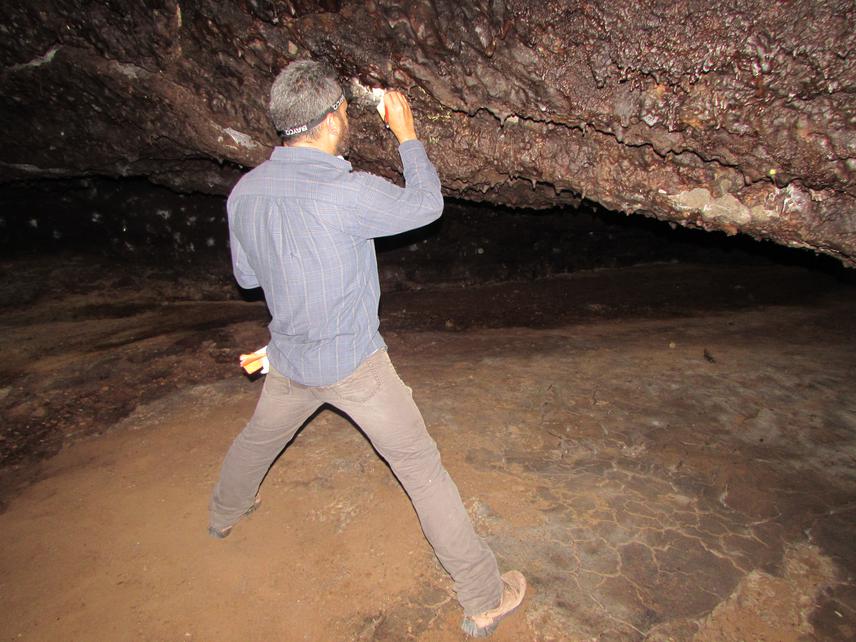Daniel Zamora Mejías
For this project, I will determine how life-history factors of the migratory Long-nosed Bat species (Leptonycteris yerbabuenae and L. nivalis) affect the transmission of parasites and how parasite loads shift due to variables such as migration, contact between demes, nursery aggregation, individual phenology and abiotic factors. To accomplish this I will examine the molecular and morphological traits of Periglischrus paracaligus (Spinturnicidae), a highly specific parasite that depends strictly on host body contact for dispersal, making this species a suitable target to indirectly study the ecology of their hosts.
The objectives of my project are: 1) To evaluate the physical factors and their effects on the host-parasite system, 2) To assess intraspecific variation of parasites, at the genetic and morphological level across the geographical distribution of its hosts 3) To elucidate historical events or current demographic processes in the genus Leptonycteris using the genetic and morphological variation of their parasites.

Sampling parasites inside a cave, batflies only leave the bats body to larviposit on the cave´s walls.
For this project, I will determine how life-history factors of the migratory Long-nosed Bat (Leptonycteris yerbabuenae) and Mexican Long-nosed Bat (Leptonycteris nivalis) affect the transmission of parasites and how parasite loads shift due to variables such as migration, contact between demes, nursery aggregation, individual phenology and abiotic factors.
During my fieldwork, from August 2017 to June 2018, I will collect parasite samples from the bats to evaluate prevalence, intensity and species richness of the entire community of parasites and its fluctuations, among localities and between seasons. These variables will be correlated with the specific environmental variables outside the cave and inside the cave such as humidity, temperature, size of the host colony, host phenology and host morphological variation.
Also I will examine the molecular and morphological traits of Periglischrus paracaligus (Spinturnicidae), a highly specific parasite that depends strictly on host body contact for dispersal, making this species a suitable target to indirectly study the history and ecology of their hosts. Molecular information used in conjunction with ecological, demographic, behavioral, and morphological data will provide key information, not just about species richness or changes in prevalence and intensity of the parasite loads, but also novel and important knowledge about variability among parasites in conjunction with their host, which will help us to infer the dynamics of the migrant and non-migrant populations of Leptonycteris.
Parasites of endangered or threatened hosts (as Leptonycteris spp.) should be known and conserved as part of the host's natural environment. But parasites ought to be studied and conserved as well because parasitic exposure might be crucial to the survival of the host through the development of a functional immune system. Comparative phylogeographical studies can expand our understanding of the complete ecology and evolutionary history of host and parasite populations.
At the end of the project, we will have a better understanding of how major life history factors such as migration and pressures on populations such as habitat loss affect disease propagation. This information is still unknown for these species, and it is crucial for determining potential or currently unknown threats throughout their geographic distribution, migration paths and may be applied to reinforce the current bat conservation programs.